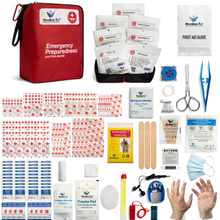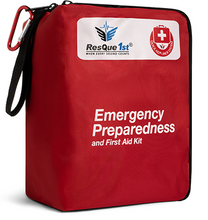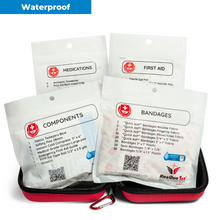
Pets
For most of us, our pets are integral members of our families. We care for them, play with them, allow them to sleep in our beds, take them on trips. They provide comfort and joy, and we love them.
But there are times when the play may get a little rough. Kitty is so intent on swatting at the toy we are dangling in front of her that she doesn’t see our hand. Or we do something that our pet just finds annoying - like brush him or give her a bath - or threatening - like when little Susie decides to pet Rover just as he is eating. As much as they love us, our pets will follow their instincts and scratch or bite.
Most of the scratches and bites are minor and can be easily treated using the tips below and items from your emergency kit, but sometimes there can be more serious consequences. Like cat scratch disease. About 40% of cats and kittens carry a particular type of bacteria in their mouths or under their claws. This gets transmitted to humans through scratches and bites. While this doesn’t happen often, it is something to be aware of and take precautions against.
The best prevention is to treat our pets with respect and to never disturb them when they are eating or sleeping - a good lesson to teach our children from a very young age. Keeping our pets properly immunized and licensed also helps prevent the spread of germs.
Wild Animals
While most of us don’t encounter wild animals on a regular basis, outdoor activities such as camping, hiking, or even backyard bar-b-ques can find us getting bit or scratched by the likes of skunks, raccoons, bats and even foxes. Children are particularly vulnerable due to their natural curiosity. Teach them to stay away from strange animals and not to tease or provoke them. In case of a bite or scratch from a wild animal, do the emergency treatment listed below and immediately seek professional medical care.
How to treat a simple scratch:
- Wash your hands. Use soap and water to help prevent getting bacteria into the cut and causing an infection. If you’re on the go, use hand sanitizer. If you have them, put on latex-free gloves to further discourage the spread of bacteria.
- Stop the bleeding. Apply pressure to the area with a clean cloth or a gauze pad. Keep it on for several minutes.
- Clean the wound. Hold it under clean, running water. Wash the area around the wound with soap. Avoid getting soap into the wound because it could irritate it.
- Dry the wound.
- Apply antibiotic ointment.
- Apply a sterile gauze or adhesive bandage, depending on the size of the scratch. Change the bandage every day or whenever it gets wet or dirty. The bandage can be removed once the scab has formed. Not all scratches need a bandage because they may heal more quickly when left uncovered and dry. If the cut is on a part of the body that rubs against clothing or could get dirty, do cover it up.
How to treat a bite:
- Stop the bleeding by holding a towel or gauze on the wound.
- Clean the wound with soap and water.
- Cover it with a clean bandage or gauze pad.
Check with your doctor or go to the Emergency Room if:
- The scratch or bite broke or punctured the skin. Antibiotics may be needed.
- The wound is on the face neck, hand, foot or near a joint, like on the fingers.
- The bite was caused by an animal you don’t know, or by any wild animal like a racoon, skunk or bat. A tetanus or rabies vaccine may be needed.
- The bite is large and you can’t stop the bleeding after putting direct pressure on it for 10-15 minutes. Stitches ay be needed.
- You can’t get dirt out of the wound.
- The wound is red, swollen or oozing fluid.
- The person can’t bend or straighten the body part that was bitten or has lost feeling in it. That may indicate that the bite may have damaged a bone, tendons, or nerves.
Minor scratches and bites are part of life with a pet. They are easily handled using basic first aid techniques and the supplies found in a good emergency kit. Always keep one handy so that you can treat these wounds quickly and with confidence.









